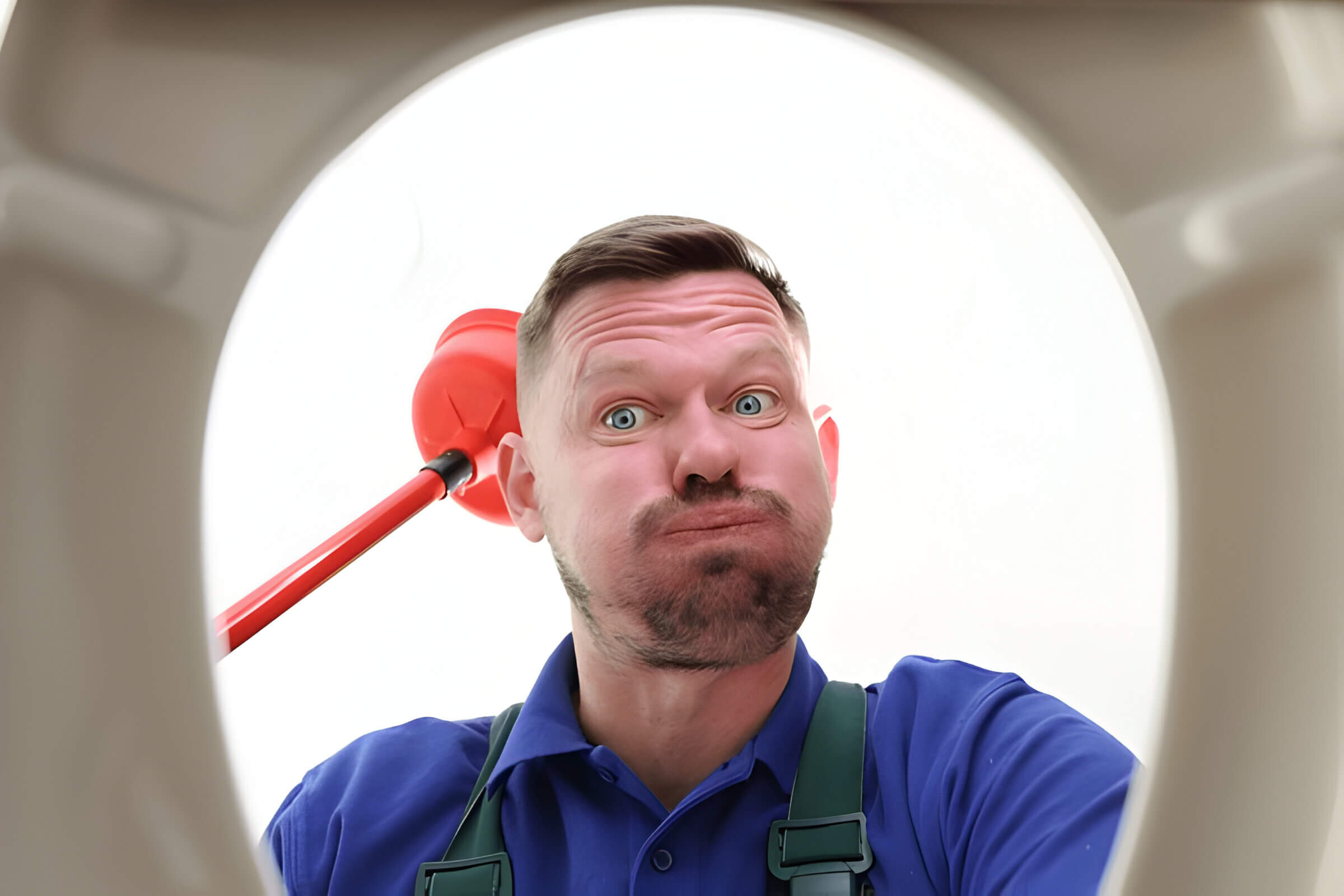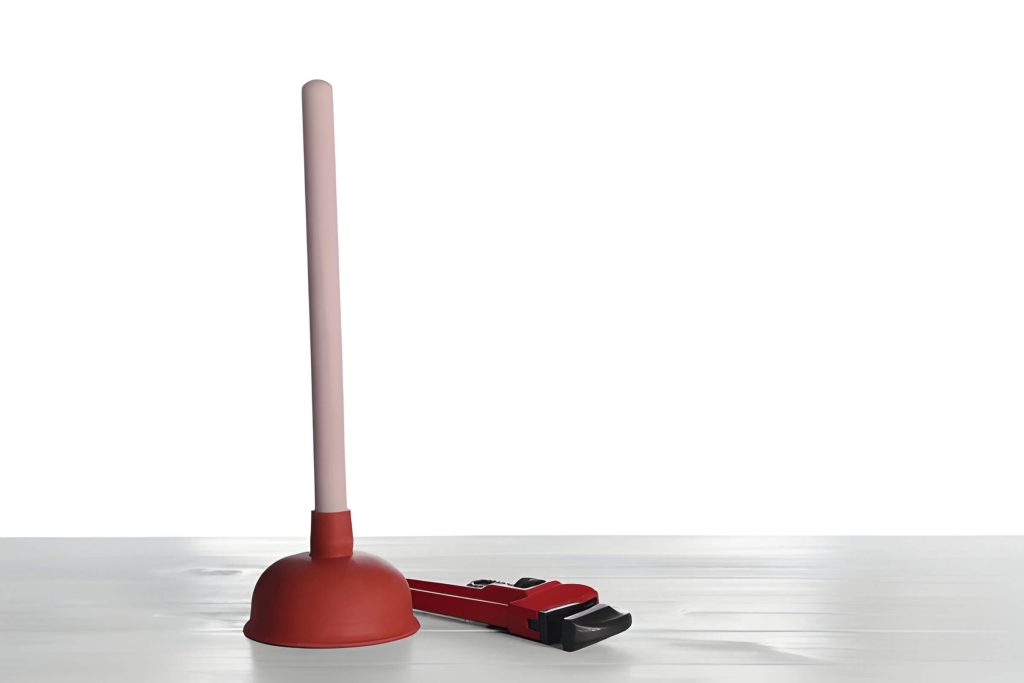
Dealing with a clogged toilet can be frustrating, but understanding the causes and solutions makes it easier. This guide covers everything from identifying common culprits to using essential tools. Whether you use a plunger or alternative methods like baking soda and vinegar, we’ve got you covered. We’ll also advise when to call professionals and how to prevent future clogs. Read on for quick solutions to keep your toilet running smoothly.
Common Causes of Clogged Toilets
Toilet clogs are a common household issue that can be both frustrating and inconvenient. Understanding the causes of toilet clogs can help you take preventive measures and know how to unclog a toilet when necessary.
One of the most frequent causes of toilet clogs is the overuse of toilet paper. While it may seem harmless, excessive amounts can accumulate and block the pipes, leading to slow drainage or complete blockage. Another common culprit is flushing non-flushable items such as wipes, sanitary products, or even small toys. These items do not break down easily in water and can quickly cause a clog.
Additionally, older plumbing systems are more susceptible to clogs due to narrower pipes or buildup over time. Hard water deposits and mineral buildup can also constrict the flow within your pipes, making it easier for materials to get stuck.
Preventing toilet clogs involves mindful usage and regular maintenance. Avoid flushing anything other than human waste and toilet paper. Consider using less toilet paper per flush or opting for brands that dissolve more readily in water. Regularly cleaning your toilet with appropriate cleaners can also help prevent buildup inside the pipes.
If you do encounter a clog, there are several methods on how to unclog a toilet effectively. A plunger is usually your first line of defense; ensure you use one designed specifically for toilets for better suction. For more stubborn clogs, an auger or plumbing snake might be necessary to break up or retrieve the blockage.
By understanding these common causes of toilet clogs and taking proactive steps to prevent them, you can maintain a smoothly functioning bathroom with fewer interruptions.
Essential Tools You Need to Unclog a Toilet Effectively

When it comes to unclogging a toilet effectively, having the right tools can make all the difference. The most essential tool in this endeavor is undoubtedly the toilet plunger. A good-quality plunger with a flange design creates a strong seal and provides the necessary suction to dislodge stubborn clogs.
In addition to a plunger, there are other plumbing tools that can be invaluable. A toilet auger, for instance, is specifically designed to navigate the curves of your toilet’s drain and reach clogs that are deeper within the plumbing system. This makes it one of the best tools for unclogging toilets when a plunger alone doesn’t suffice.
Another handy tool is an enzyme-based drain cleaner. Unlike chemical-based cleaners, enzyme cleaners use natural bacteria and enzymes to break down organic material in your pipes without causing damage or corrosion.
Having these unclogging tools at your disposal ensures that you are well-equipped to tackle any toilet blockage efficiently and effectively, minimizing inconvenience and potential damage to your plumbing system.
Step-by-Step Guide How to Unclog a Toilet with a Plunger
Unclogging a toilet with a plunger is a straightforward task if you follow the right steps and techniques. Here’s a step-by-step guide on how to use a plunger effectively to clear your toilet.
1. Choose the Right Plunger: Not all plungers are created equal. For toilets, it’s best to use a flange plunger, which has an extended rubber flap that fits snugly into the toilet drain for better suction.
2. Prepare the Area: Place old towels or newspapers around the base of the toilet to catch any water that might splash out during plunging. Make sure you have rubber gloves on for hygiene purposes.
3. Position the Plunger: Insert the flange of the plunger into the toilet bowl so it covers the drain hole completely. The cup should be submerged in water; if not, add enough water to cover it.
4. Create an Effective Seal: Ensure there are no air bubbles trapped under the cup of your plunger as this can reduce its effectiveness. Press down gently at first to create a firm seal around the drain hole.
5. Use Proper Plunging Techniques: Begin by pushing down slowly and then pulling up sharply without breaking the seal you’ve created around the drain hole. Repeat this action several times in quick succession; typically 15-20 times should suffice.
6. Check Progress: After several plunges, remove the plunger and see if water starts draining properly from your toilet bowl indicating that you’ve successfully unclogged it.
7. Repeat If Necessary: If your initial attempts don’t work, don’t get discouraged! Sometimes stubborn clogs need multiple rounds of plunging before they clear completely.
8. Clean Up: Once successful in unclogging tips like these can help keep things clean; disinfect both your hands (if not wearing gloves) and any surfaces affected by splashes using household cleaners or bleach solutions accordingly!
By following these steps carefully while using appropriate tools & techniques mentioned above one can easily tackle common plumbing issues such as clogged toilets efficiently without needing professional assistance every time!
Alternative Methods How to Unclog a Toilet Without a Plunger
When faced with a clogged toilet and no plunger in sight, there are several alternative methods you can use to resolve the issue effectively. Here, we will discuss three natural remedies for clogged toilets: the baking soda and vinegar method, the hot water method, and the dish soap method.
The baking soda and vinegar method is a popular choice due to its effectiveness and ease of use. Start by pouring one cup of baking soda into the toilet bowl, followed by two cups of vinegar. The mixture will create a fizzing reaction that helps break down the clog. Allow it to sit for about 30 minutes before flushing.
Next, consider the hot water method. Boil a pot of water and let it cool slightly so it’s not scalding hot but still very warm. Pouring boiling water directly into the toilet can cause damage to porcelain or even crack it. Carefully pour the warm water into the toilet bowl from waist height; this added force can help dislodge whatever is causing the blockage.
Lastly, there’s the dish soap method. Pour about half a cup of liquid dish soap into the toilet bowl and let it sit for 10-15 minutes. The soap acts as a lubricant that helps loosen up any stubborn debris stuck in your pipes. After allowing time for it to work its magic, try flushing again.
These natural remedies for clogged toilets are not only effective but also safe for your plumbing system. Whether you opt for baking soda and vinegar, hot water, or dish soap, these methods offer practical solutions when you’re in a pinch without access to a plunger.
When to Call in Professional Help
Dealing with a clogged toilet can be a frustrating experience, but not all clogs are created equal. While some blockages can be resolved with a plunger or a plumbing snake, persistent clogs may require professional intervention. Understanding when to call in a professional plumber can save you time, money, and prevent further damage to your plumbing system.
Persistent clog solutions often start with basic DIY methods. If you’ve tried plunging multiple times and the water still isn’t draining properly, it might be time to escalate your efforts. A plumbing snake or auger can sometimes clear more stubborn blockages that are deeper within the pipes. However, if these tools don’t resolve the issue or if the clog keeps recurring despite your best efforts, it’s an indication that you need professional plumber help.
Knowing when to call a plumber for a clogged toilet is crucial. If you notice that multiple drains in your home are backing up simultaneously, this could signal a more serious issue such as a blockage in the main sewer line. Additionally, unusual noises like gurgling from other drains when you flush the toilet often point to underlying problems that require expert attention.
Professional plumbers have specialized equipment and expertise that go beyond basic household tools. They can perform thorough inspections using advanced techniques like video camera inspections to pinpoint the exact location and cause of persistent clogs. This ensures not only an effective solution but also helps prevent future issues by addressing root causes rather than just symptoms.
While minor clogs can often be managed with DIY methods, persistent or complex blockages necessitate calling in professional help. Recognizing when to seek expert assistance ensures your plumbing system remains functional and prevents potential damage down the line.
Tips for Keeping Your Toilet Clog-Free
Preventing toilet clogs is essential for maintaining a smoothly running household. Here are some effective maintenance tips for toilets that can help you avoid future clogs and keep your plumbing in top condition.
1. Mind What You Flush: One of the simplest ways to prevent toilet clogs is by being mindful of what you flush. Only human waste and toilet paper should go down the toilet. Avoid flushing items like wet wipes, sanitary products, cotton balls, and paper towels, as these can easily cause blockages.
2. Regular Cleaning: Regular cleaning not only keeps your toilet sanitary but also helps prevent buildup that can lead to clogs. Use a gentle toilet cleaner and brush to scrub the bowl at least once a week, paying special attention to areas under the rim where debris can accumulate.
3. Use a Plunger: Even with careful use, minor blockages can occur from time to time. Having a quality plunger on hand allows you to quickly address small clogs before they become major issues.
4. Check Water Pressure: Low water pressure can contribute to frequent clogging as it may not provide enough force to clear waste from the pipes effectively. Ensure your home’s water pressure is adequate and consult a plumber if adjustments are needed.
5. Routine Inspections: Periodic inspections by a professional plumber can identify potential problems before they escalate into serious issues. A plumber can check for signs of wear, leaks, or other conditions that could lead to future clogs.
By following these preventative measures and maintenance tips for toilets, you’ll be well on your way to avoiding future clogs and ensuring your plumbing system remains efficient and trouble-free.
Knowing How to Unclog a Toilet Can Save You Time and Money
Understanding how to unclog a toilet is an invaluable skill that can save you both time and money. By learning simple techniques, such as using a plunger or a plumbing snake, you can quickly address minor blockages without the need for professional help. This not only reduces the immediate inconvenience but also minimizes potential damage to your plumbing system.
Moreover, being equipped with this knowledge allows you to act swiftly in emergencies, preventing small issues from escalating into costly repairs. Investing a little time in mastering these basic skills can lead to significant long-term savings and ensure that your household runs smoothly.



